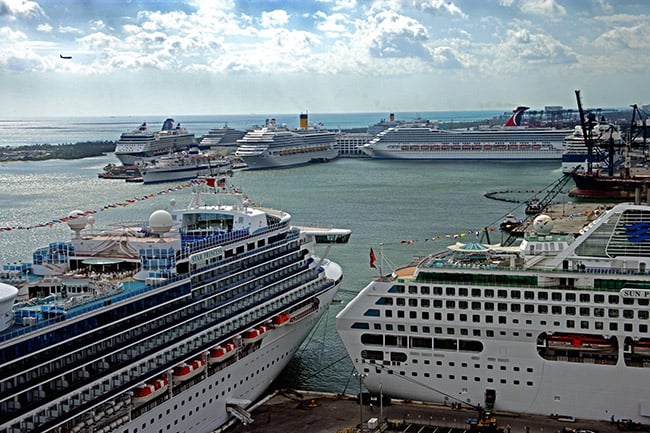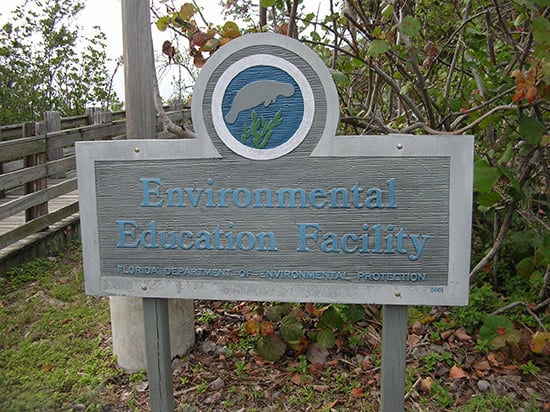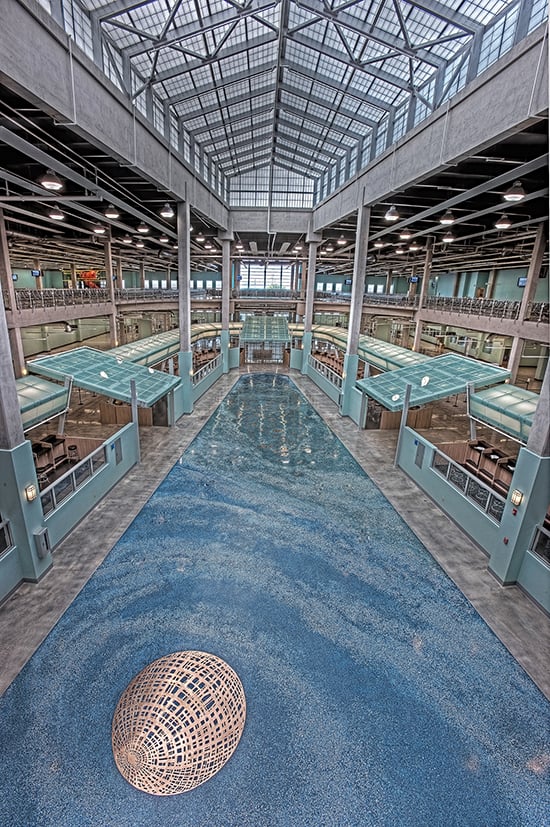Most of us have parked a car somewhere and scoffed at the price, but have you ever thought about how much it costs to “park” a cruise ship? When you book a cruise, you’re paying not just for the ship’s staff, your meals, whatever they use to keep the brass railings so shiny, etc – but also taxes and fees, many of which cover the cost of the space and services used while in the port at which you’re starting and ending your cruise. Let’s look at who is being paid, what that money goes towards, and of course, how much it all costs.
Who Is Being Paid
In the United States, most ports are operated by county governments, but there are some exceptions where special arrangements are made so that ports directly serving multiple areas can share the operational responsibility. Where Miami-Dade County runs PortMiami, many of the ports in New Jersey and New York are controlled by the New Jersey & New York Port Authority. While governments operate ports to generate revenue, much of the port fees cover operational costs. Last year, Port Everglades in Ft Lauderdale took in more revenue than any port in the state, but that was less than $163 million. The bigger financial incentive to running these ports is the benefit to communities in the form of jobs, tourism, and other revenue streams which the port helps to facilitate.

Where the Money Goes
What kinds of operational costs? Ports provide security services, facilities for parking, space for customs and immigration, international trade zones (where cargo can switch ships in port to go outside the US without incurring tariffs), scheduling of resources, and other logistics services. Further, ports have significant engineering tasks in maintaining the port’s facilities and waterways while being careful to minimize environmental impact. In accordance with the goal of environmental stewardship, Port Everglades built an Environmental Education Facility at Dr Von D Mizell-Eula Johnson State Park (formerly John U Lloyd, and a great place to watch ships!). In fact, the responsibilities of a port often extend to waterways leading to the port itself.
Interestingly, a few of the things you may first think of are not actually run by the port. Tug boats for example are usually run by private businesses, and have agreements with the port which allow them to operate while being paid by shipping companies and cruise lines. Even the harbor pilots are not usually government employees, but employed by pilots’ associations for a certain region, port, or set of ports.

The Cost
Rates vary quite a bit from port to port, and are not always calculated the same. While time is always a factor (and for cruise ships, most ports charge in 24 hour blocks), some charge by gross tonnage of a vessel, others by LOA (overall length). Below we’ve broken down the single-day cost of just the dockage fees (not including extra security, longshoremen, pilots, tugs, etc) for three cruise ships in three ports.
|
|
PortMiami |
Port Everglades |
Port Canaveral |
|
Harmony of the Seas |
$81,720 |
$60,881 |
$15,693 |
|
Celebrity Solstice |
$43,876 |
$32,688 |
$10,392 |
|
Oceania Regatta |
$6,661 |
$8,120 |
$3,588 |
You'll notice that while PortMiami seems generally more expensive than Port Everglades, this is not the case for the Oceania Regatta. This is because PortMiami has a terminal (Terminal J) for use by smaller ships (like the Regatta) which has a much lower rate per ton than the other terminals needed by larger ships. Interestingly, because Port Canaveral charges by LOA rather than tonnage, Harmony of the Seas pays around 50% more than the Celebrity Solstice even though she is twice the tonnage (and around 30% wider).
Regardless of how they're calculated, it's easy to understand why these costs vary by ship size: a larger ship likely means more passengers, more space for loading, additional security, higher terminal electricity costs, etc.

accommodate the world's largest cruise ships
Wrapping It Up
Here we discussed just some of the things associated with the fees you pay when cruising, and barely scratched the surface of everything that ports do. In addition to those services and the rates we discussed, cruise lines routinely work with ports and other government entities, committing to a certain number of annual passengers and other metrics in exchange for new terminal buildings, better rates with contractors, and more. Truthfully, as relaxing and fun as cruising is, a part of the attraction we've always had is the incredible amount of work that so many people do in order to make the whole experience seem easy. As such, next time you're setting off on a cruise, thank the port staff, they're working hard for you, just like your stateroom attendant and captain.
To learn about other expenses you might not think about when budgeting for your cruise, read our article on what is not included in your cruise fare.
Have tips or questions about changing currency or using credit cards abroad? Let us know in the comments below, or reach out on Facebook or Twitter!

